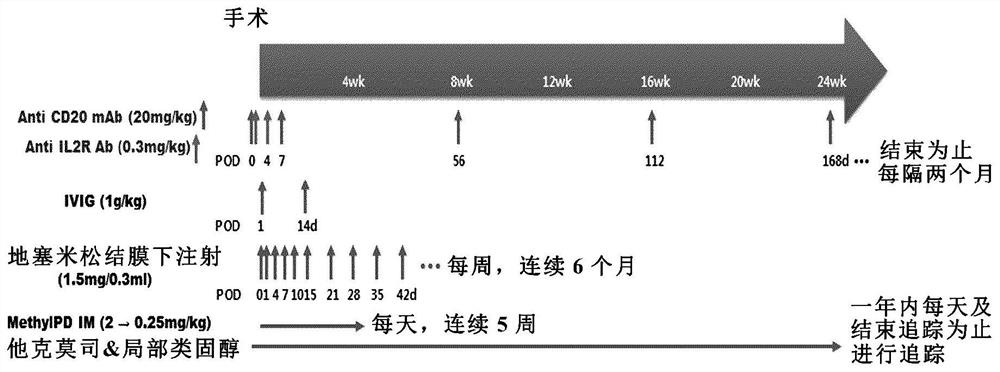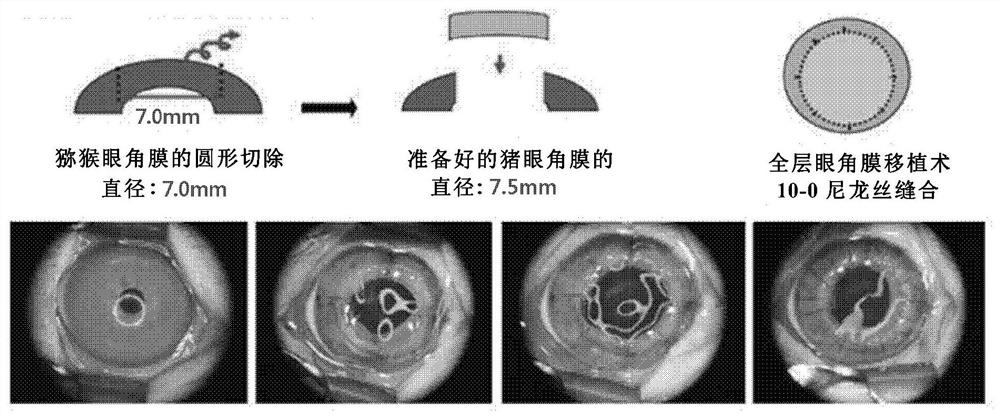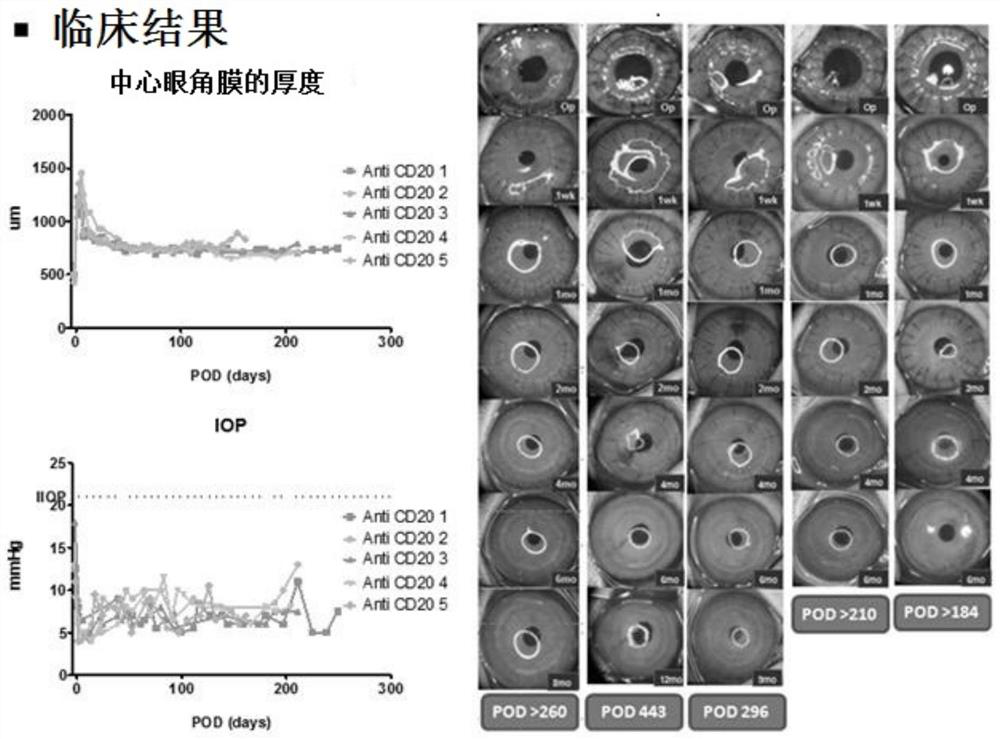Combined immunosuppressive method of anti-CD20 monoclonal antibody and tacrolimus in corneal xenotransplantation
A xenotransplantation, tacrolimus technology, applied in the direction of anti-receptor/cell surface antigen/cell surface determinant immunoglobulin, anti-animal/human immunoglobulin, antibody, etc., can solve the difficult problem of primates. Reproduction, high risk of high sensitivity, high social exclusion
- Summary
- Abstract
- Description
- Claims
- Application Information
AI Technical Summary
Problems solved by technology
Method used
Image
Examples
Embodiment 1
[0034] Example 1: Pig to Primate Xenograft Anti-CD20 Combination Systemic Immunosuppression Protocol
[0035] 1.1 Establishment of a systemic immunosuppressive regimen
[0036] In order to establish a regimen that can suppress the immune response in the preparation of corneas for xenografts, the following anti-CD20 combined systemic immunosuppression regimen was proposed. In this protocol, anti-CD20Ab, anti-IL2RAb, intravenous immunoglobulin (IVIG), tacrolimus, and methylprednisolon were injected according to the prescribed cycle. Rituximab was used as the anti-CD20 mAb and basiliximab was used as the anti-IL2R Ab. The solution of the present invention is figure 1 shown in, as follows.
[0037] Rituximab, an anti-CD20Ab, was injected as an iv slow infusion, 20 mg / kg on the day of the xenograft surgery and on the 7th day after the surgery, and 8 weeks after the surgery, in a cycle of 8 weeks Repeated injections were performed to confirm whether the IgG antibody increased or...
PUM
 Login to View More
Login to View More Abstract
Description
Claims
Application Information
 Login to View More
Login to View More - R&D
- Intellectual Property
- Life Sciences
- Materials
- Tech Scout
- Unparalleled Data Quality
- Higher Quality Content
- 60% Fewer Hallucinations
Browse by: Latest US Patents, China's latest patents, Technical Efficacy Thesaurus, Application Domain, Technology Topic, Popular Technical Reports.
© 2025 PatSnap. All rights reserved.Legal|Privacy policy|Modern Slavery Act Transparency Statement|Sitemap|About US| Contact US: help@patsnap.com



